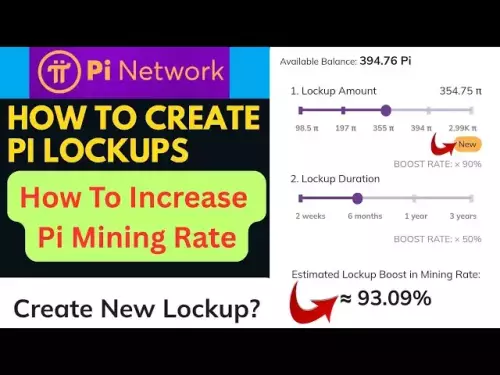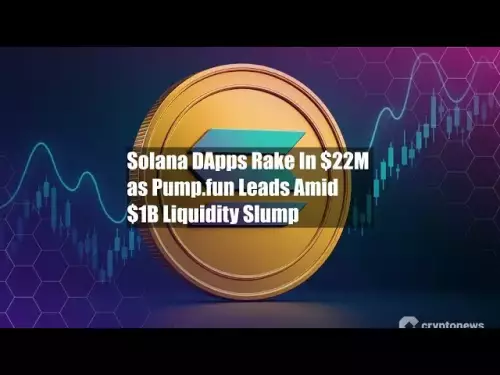-
 bitcoin
bitcoin $114779.865156 USD
2.30% -
 ethereum
ethereum $4226.519789 USD
2.39% -
 tether
tether $1.000545 USD
0.04% -
 xrp
xrp $2.890223 USD
0.92% -
 bnb
bnb $1030.029301 USD
2.95% -
 solana
solana $212.824944 USD
1.69% -
 usd-coin
usd-coin $0.999757 USD
0.01% -
 dogecoin
dogecoin $0.234961 USD
-0.27% -
 tron
tron $0.337174 USD
0.42% -
 cardano
cardano $0.804783 USD
0.09% -
 hyperliquid
hyperliquid $45.748770 USD
-2.85% -
 chainlink
chainlink $21.699170 USD
0.82% -
 ethena-usde
ethena-usde $1.001452 USD
0.08% -
 avalanche
avalanche $30.237800 USD
1.14% -
 stellar
stellar $0.372604 USD
1.52%
How do I calculate the maintenance margin ratio for Bitcoin contracts?
The maintenance margin ratio in Bitcoin futures is crucial for avoiding liquidation, calculated as (Maintenance Margin / Position Value) × 100, and varies by exchange and contract.
Sep 27, 2025 at 01:18 pm
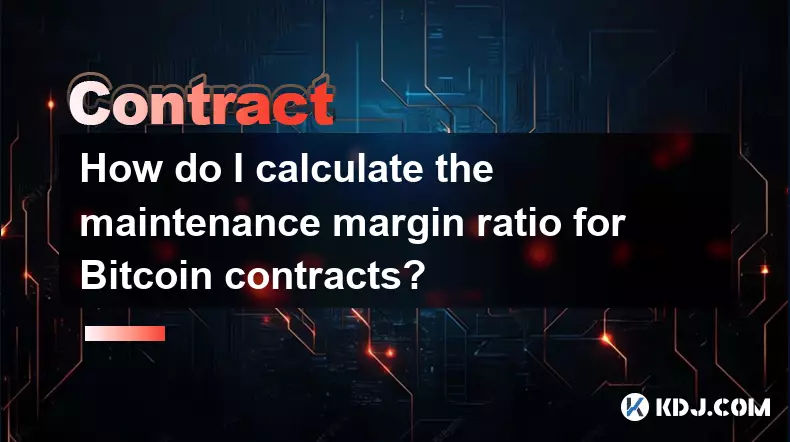
Understanding the Maintenance Margin Ratio in Bitcoin Futures
1. The maintenance margin ratio is a critical metric used by exchanges to determine whether a trader’s position remains active or faces liquidation. It represents the minimum amount of equity that must be maintained in a margin account relative to the notional value of an open futures position. For Bitcoin contracts, this ratio varies depending on the exchange and the specific contract terms.
2. To calculate the maintenance margin ratio, divide the maintenance margin requirement by the total position value. For example, if a Bitcoin futures contract has a notional value of $100,000 and the exchange requires $3,000 as maintenance margin, the ratio is 3%. This figure indicates that the trader must keep at least 3% of the position’s value in their account to avoid being liquidated.
3. Different leverage levels affect the maintenance margin ratio indirectly. Higher leverage reduces the initial margin required but does not change the maintenance margin percentage set by the exchange. Traders using 100x leverage may face faster liquidation due to smaller price movements impacting their equity more drastically.
4. Exchanges often publish tiered maintenance margin requirements based on position size. Larger positions may require proportionally higher maintenance margins to mitigate systemic risk. These tiers are designed to prevent cascading liquidations during volatile market conditions.
Key Components Affecting the Calculation
1. The formula for maintenance margin ratio is: (Maintenance Margin / Position Notional Value) × 100. This simple calculation helps traders assess how close they are to liquidation. Knowing this value allows proactive management of open positions before automatic closure occurs.
2. Funding rates in perpetual Bitcoin contracts do not directly alter the maintenance margin ratio but influence account balance over time. Positive or negative funding payments can erode or boost available margin, thereby affecting the effective buffer against liquidation.
3. Mark price versus last traded price plays a crucial role. Exchanges use mark price—derived from underlying spot indices—to calculate unrealized PnL and determine liquidation thresholds. Sudden divergence between mark and last price can trigger liquidations even without direct trades hitting stop levels.
4. Fees associated with trading and holding positions also impact usable margin. Taker and maker fees, withdrawal costs, and funding payments collectively reduce available funds, tightening the effective maintenance margin buffer.
Risk Management Strategies Around Margin Requirements
1. Traders should monitor their margin ratio in real-time using dashboard tools provided by exchanges. Many platforms offer alerts when the ratio approaches dangerous levels, enabling timely adjustments such as adding margin or reducing position size.
2. Using lower leverage than maximum available significantly increases resilience against volatility. A position opened at 10x leverage instead of 125x maintains a much larger equity cushion, delaying or preventing liquidation during sharp moves.
3. Diversifying across multiple contracts or avoiding over-concentration in a single futures instrument reduces exposure to sudden shifts in Bitcoin pricing. Correlated assets may behave similarly under stress, so true diversification requires careful selection.
4. Some advanced traders employ hedging techniques using options or inverse positions to offset downside risks. While these strategies add complexity, they can stabilize net exposure and preserve margin during turbulent periods.
Frequently Asked Questions
What happens when my maintenance margin ratio reaches zero?When the maintenance margin ratio hits zero, it means your equity has fallen below the required threshold. At this point, the exchange will initiate automatic liquidation of your position to cover potential losses. You lose the entire margin allocated to that trade.
Can I increase my maintenance margin after opening a position?Yes, most exchanges allow users to add additional margin to open positions. This action increases the equity in the account, effectively raising the maintenance margin ratio and moving the liquidation price further away from the current market level.
Do all Bitcoin futures have the same maintenance margin requirements?No, requirements differ across exchanges and contract types. Standardized futures on regulated platforms like CME typically have higher maintenance margins compared to perpetual swaps on decentralized or offshore exchanges offering high leverage.
How does volatility impact maintenance margin calculations?High volatility leads to wider price swings, increasing the likelihood of hitting liquidation prices. Although the maintenance margin ratio itself doesn’t change, volatile markets make it harder to maintain sufficient equity, requiring closer monitoring and potentially larger buffers.
Disclaimer:info@kdj.com
The information provided is not trading advice. kdj.com does not assume any responsibility for any investments made based on the information provided in this article. Cryptocurrencies are highly volatile and it is highly recommended that you invest with caution after thorough research!
If you believe that the content used on this website infringes your copyright, please contact us immediately (info@kdj.com) and we will delete it promptly.
- The Spanish Silver Dollar: A Global Currency Through History
- 2025-09-30 14:25:15
- SEC, Crypto, and Regulation: Navigating the Shifting Sands of Digital Finance
- 2025-09-30 14:25:15
- Government Grift, Congress, and ETF Tracking: Is This the Future of Investing?
- 2025-09-30 14:30:01
- CoinShares' Market Metrics: Bitcoin's Calm Amidst Fed Rate Tweaks
- 2025-09-30 14:30:01
- Nonprofit RFI Launches: Bridging Traditional and Decentralized Financial Systems
- 2025-09-30 14:30:01
- Emilio Lozoya's audience: REAL-TEME UPDATES VIA WHASTASP?
- 2025-09-30 14:30:15
Related knowledge
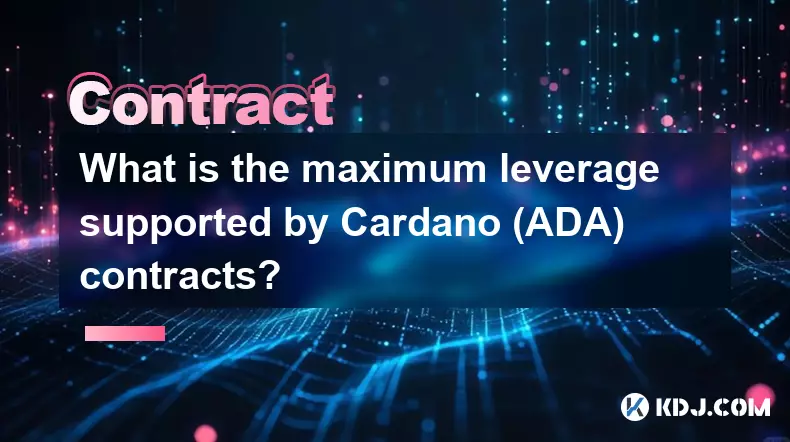
What is the maximum leverage supported by Cardano (ADA) contracts?
Sep 30,2025 at 03:37am
Understanding Leverage in ADA Derivatives Trading1. Leverage in cryptocurrency futures and perpetual contracts allows traders to control larger positi...

How do I use the scheduled order feature in Cardano (ADA) contracts?
Sep 28,2025 at 10:18pm
Understanding Scheduled Orders in Cardano Smart ContractsCardano operates on a proof-of-stakes consensus mechanism and uses the Plutus scripting langu...

Can I modify the leverage of Cardano (ADA) contracts after opening a position?
Sep 30,2025 at 08:19am
Understanding Leverage in Cardano (ADA) Futures Trading1. Leverage allows traders to control larger positions using a smaller amount of capital. In th...
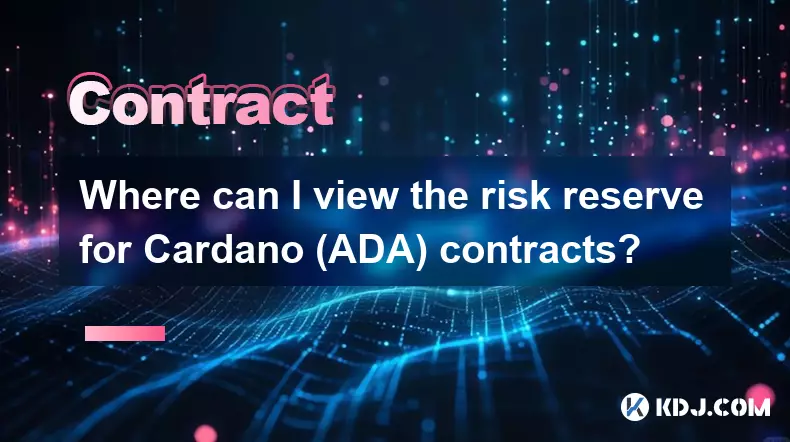
Where can I view the risk reserve for Cardano (ADA) contracts?
Sep 29,2025 at 09:19pm
Risk Reserve Overview in Cardano (ADA) Ecosystem1. The concept of a risk reserve within the Cardano blockchain does not align with traditional central...

How do I enable the "scalping-only" mode for Cardano (ADA) contracts?
Sep 24,2025 at 03:19am
Understanding Scalping Strategies in Crypto Derivatives1. Scalping in cryptocurrency trading refers to executing multiple short-term trades within min...

What is the settlement time for Cardano (ADA) contracts?
Sep 28,2025 at 04:18am
Understanding Cardano's Contract Settlement Mechanism1. Cardano operates on a proof-of-stake consensus model known as Ouroboros, which fundamentally i...

What is the maximum leverage supported by Cardano (ADA) contracts?
Sep 30,2025 at 03:37am
Understanding Leverage in ADA Derivatives Trading1. Leverage in cryptocurrency futures and perpetual contracts allows traders to control larger positi...

How do I use the scheduled order feature in Cardano (ADA) contracts?
Sep 28,2025 at 10:18pm
Understanding Scheduled Orders in Cardano Smart ContractsCardano operates on a proof-of-stakes consensus mechanism and uses the Plutus scripting langu...

Can I modify the leverage of Cardano (ADA) contracts after opening a position?
Sep 30,2025 at 08:19am
Understanding Leverage in Cardano (ADA) Futures Trading1. Leverage allows traders to control larger positions using a smaller amount of capital. In th...

Where can I view the risk reserve for Cardano (ADA) contracts?
Sep 29,2025 at 09:19pm
Risk Reserve Overview in Cardano (ADA) Ecosystem1. The concept of a risk reserve within the Cardano blockchain does not align with traditional central...

How do I enable the "scalping-only" mode for Cardano (ADA) contracts?
Sep 24,2025 at 03:19am
Understanding Scalping Strategies in Crypto Derivatives1. Scalping in cryptocurrency trading refers to executing multiple short-term trades within min...

What is the settlement time for Cardano (ADA) contracts?
Sep 28,2025 at 04:18am
Understanding Cardano's Contract Settlement Mechanism1. Cardano operates on a proof-of-stake consensus model known as Ouroboros, which fundamentally i...
See all articles





















